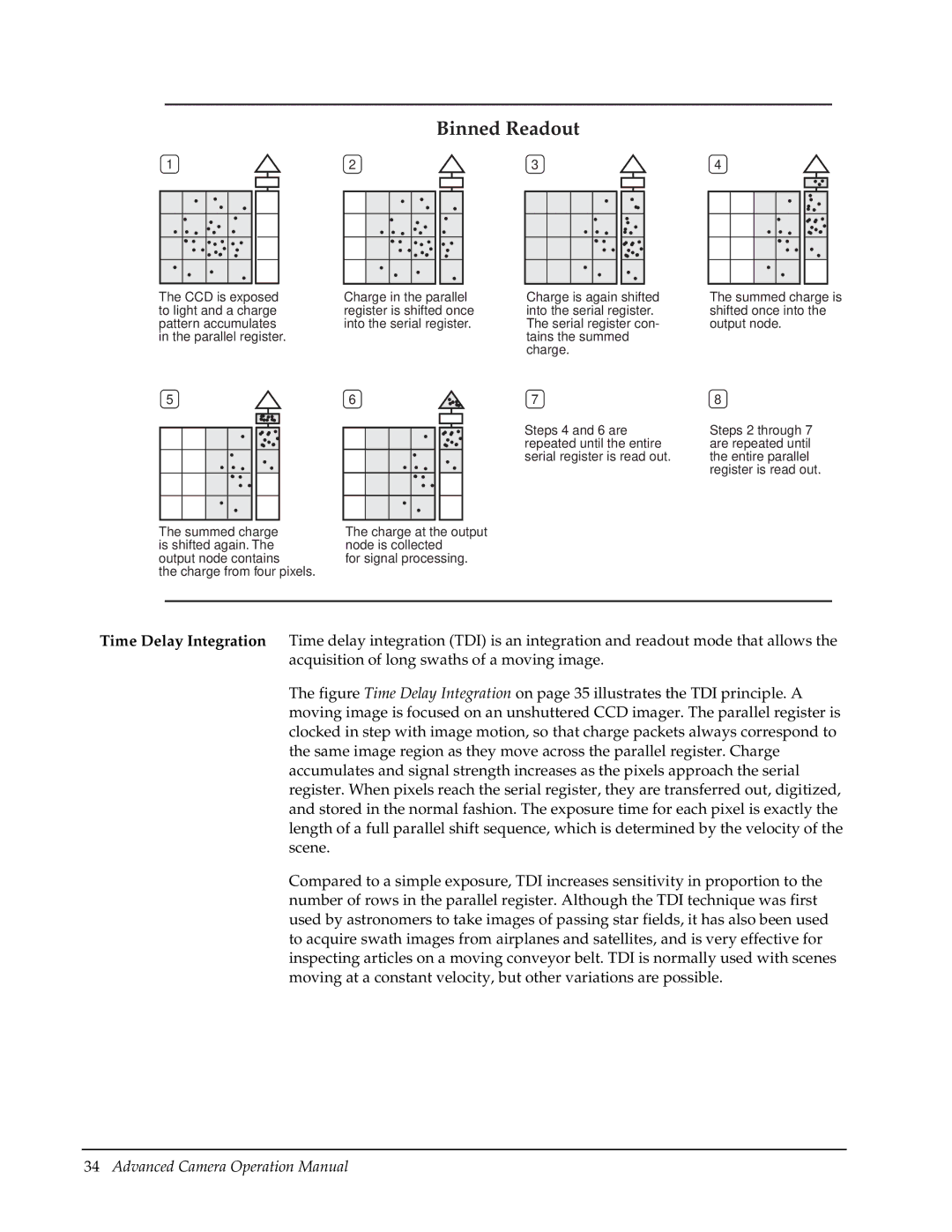
|
| Binned Readout |
|
1 | 2 | 3 | 4 |
The CCD is exposed to light and a charge pattern accumulates in the parallel register.
Charge in the parallel register is shifted once into the serial register.
Charge is again shifted into the serial register. The serial register con- tains the summed charge.
The summed charge is shifted once into the output node.
5 | 6 | 7 | 8 |
Steps 4 and 6 are repeated until the entire serial register is read out.
The summed charge | The charge at the output |
is shifted again. The | node is collected |
output node contains | for signal processing. |
the charge from four pixels. |
|
Steps 2 through 7 are repeated until the entire parallel register is read out.
Time Delay Integration Time delay integration (TDI) is an integration and readout mode that allows the acquisition of long swaths of a moving image.
The figure Time Delay Integration on page 35 illustrates the TDI principle. A moving image is focused on an unshuttered CCD imager. The parallel register is clocked in step with image motion, so that charge packets always correspond to the same image region as they move across the parallel register. Charge accumulates and signal strength increases as the pixels approach the serial register. When pixels reach the serial register, they are transferred out, digitized, and stored in the normal fashion. The exposure time for each pixel is exactly the length of a full parallel shift sequence, which is determined by the velocity of the scene.
Compared to a simple exposure, TDI increases sensitivity in proportion to the number of rows in the parallel register. Although the TDI technique was first used by astronomers to take images of passing star fields, it has also been used to acquire swath images from airplanes and satellites, and is very effective for inspecting articles on a moving conveyor belt. TDI is normally used with scenes moving at a constant velocity, but other variations are possible.
34Advanced Camera Operation Manual
